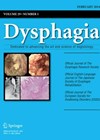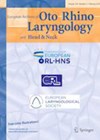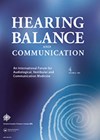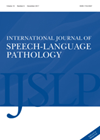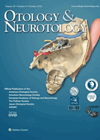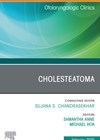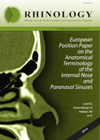
Journal Reviews
Measuring radiation fibrosis in patients with head and neck cancer
People treated with radiotherapy for head and neck cancer experience several acute and chronic effects of this treatment, of which fibrosis is perhaps the most common. Fibrosis occurs as a wound healing response and leads to scarring and reduced range...
Quinsy and culture
Peritonsillar abscesses are frequently encountered in clinical practice. Standard treatment includes empirical medical treatment and drainage. This study aimed at evaluating the value of culture and sensitivity testing of the aspirate in guiding antibiotic treatment. Patients received empirically amoxycillin, amoxycillin...
Audiological outcomes after CI in patients with inner ear schwannomas
In the last decade, several case series and case reports describing hearing rehabilitation with cochlear implants (CI) in patients with inner ear schwannomas (IES) have been published. This systematic review and meta-analysis studied audiological outcomes from 110 patients (111 ears)...
Falls and ASL users
A mixed-method pilot study was carried out to assess the cognitive load of sign language among users and, consequently, the possible risk of injurious falls. The study specifically investigated the possible risk of falls due to the simultaneous activity of...
Are they just ignoring you?
The clarity of hearing in background noise, which is influenced by the signal-to-noise ratio, has been a much-debated topic over many years from various angles. This study looks at anaesthetised cats and, as cats are not commonly known for their...
Help seeking for tinnitus – experiences of the diagnostic and treatment process
Population-based and self-selecting adult participants of this Australian cohort study (n=281) completed survey questions exploring varied outcome measures related to tinnitus. Primary outcomes assessed communication of initial tinnitus diagnoses and subsequent treatment offering, with participants rating their satisfaction at the...
Swallowing the risk: managing dysphagia in aged care
The risk of dysphagia increases with age and the prevalence of dysphagia in aged care facilities is 41–52%. Dysphagia increases the risk of aspiration, asphyxiation, malnutrition, pneumonia and ultimately death. Modifying food and fluids, by providing mashed or pureed foods...
One-stage laryngotracheal reconstruction in young infants
Airway inadequacy is a significant problem in young infants and may go undetected until inflammatory conditions trigger acute episodes, some of which require a tracheostomy. In addition to breathing difficulties, feeding problems are also common. This study involves 11 children...
To pack or not to pack!
Ear packing is thought to support grafts, control bleeding and facilitate healing. However, it is not without complications such as fibrosis and infection. The authors aimed at investigating the effect of middle ear packing on graft success rate in myringoplasty...
How good is secondary intention healing post nasal cutaneous tumour excision?
The variation in size and site of nasal cutaneous tumours allows the surgeon to propose various methods to close the resulting defect post-tumour excision. This prospective multicentre cohort study executed in China encompassed 150 patients, comparing wound healing times and...
Update on cholesteatoma
Surgery for cholesteatoma should be tailored to individual patients, considering patient and disease factors, to obtain a dry, safe and functional ear. In this article, the authors discuss the current definitions and classification system of middle ear cholesteatoma, as well...
Chronic rhinosinusitis update
There is still a lack of awareness of chronic rhinosinusitis (CRS) despite its burden, calling for events such as the recent Global Chronic Rhinosinusitis with Nasal Polyps (CRSwNP) Awareness Day. Research findings from recent publications by Backaert et al have...

